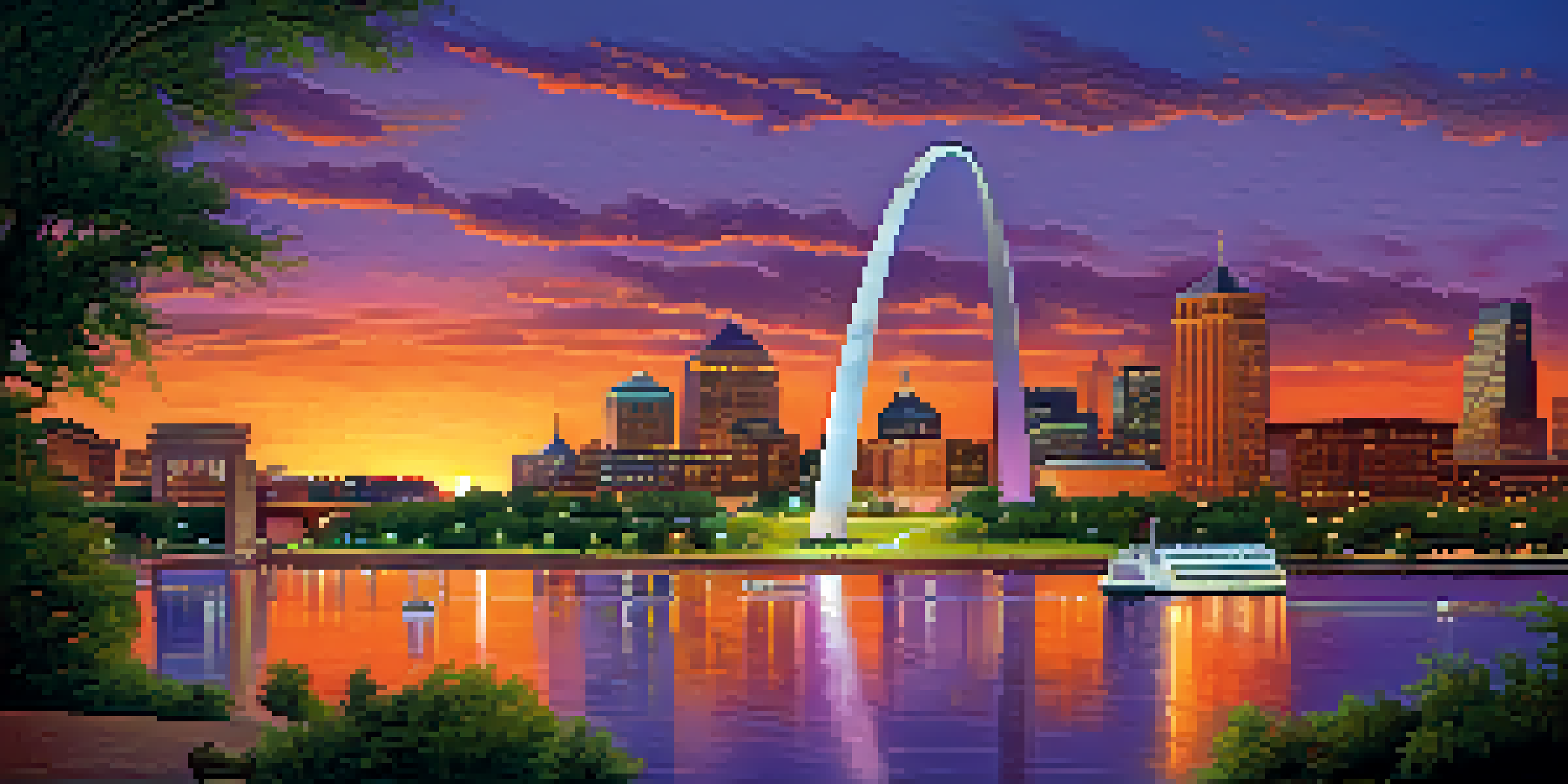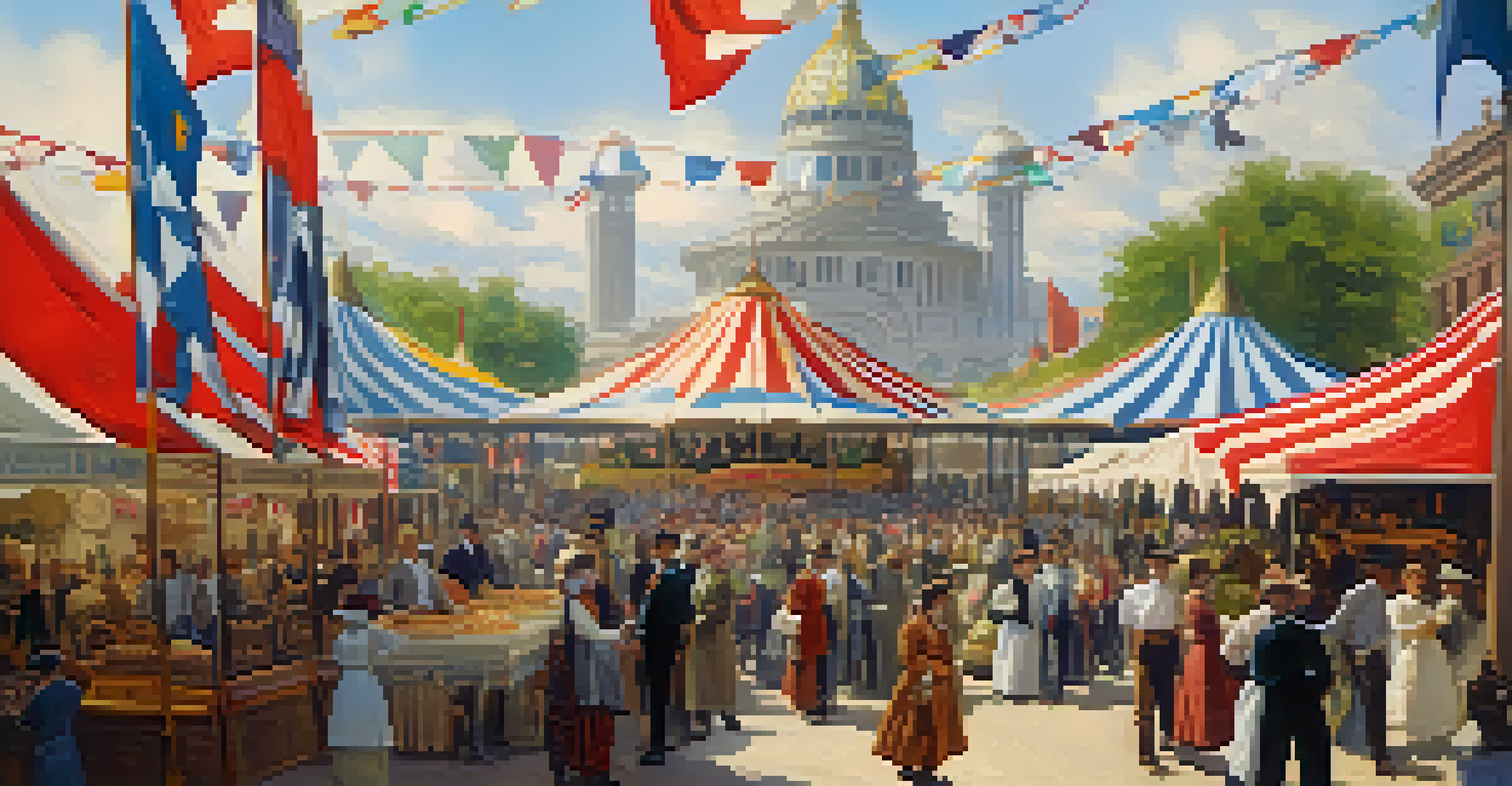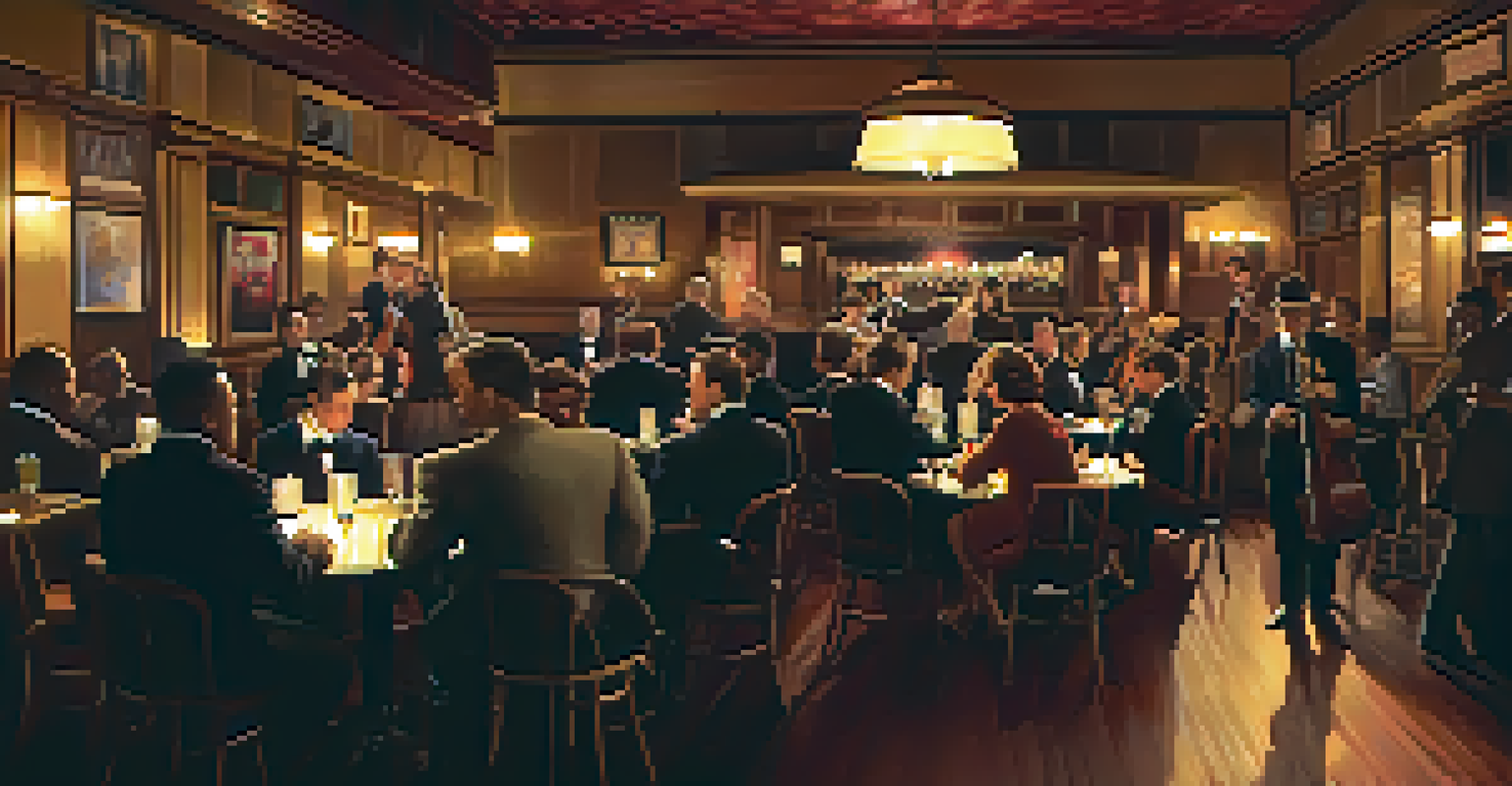Major Events that Defined St. Louis through the Ages

The Founding of St. Louis in 1764
St. Louis began as a modest fur trading post established by Pierre Laclède and Auguste Chouteau. This pivotal founding moment laid the groundwork for what would become a vibrant city. It was strategically located along the Mississippi River, facilitating trade and communication.
St. Louis is a city of bridges, not walls.
As settlers arrived, the city quickly grew, attracting diverse communities and cultures. The rich confluence of French, Spanish, and later American influences created a unique cultural tapestry. This early era set the stage for St. Louis's development into a bustling urban hub.
The significance of the founding cannot be understated; it marked the beginning of St. Louis's journey as a major player in the westward expansion of the United States. The city’s strategic location would soon make it a critical gateway for pioneers heading into the unknown territories.
The Louisiana Purchase in 1803
The Louisiana Purchase was a monumental event that doubled the size of the United States and significantly impacted St. Louis. As part of this acquisition, the city became a vital launching point for westward expansion. Suddenly, St. Louis found itself at the forefront of a new era of exploration and opportunity.

The purchase brought an influx of settlers and merchants eager to explore and exploit the vast lands. Businesses flourished as St. Louis transformed into a bustling trade center, linking the eastern and western parts of the country. This economic boom laid the foundation for St. Louis's reputation as a key commercial hub.
St. Louis: A Cultural Melting Pot
The city's diverse cultural influences, from its founding in 1764 to the Louisiana Purchase, have shaped its unique identity.
Moreover, the Louisiana Purchase solidified St. Louis's position as a cultural melting pot, introducing new ideas, people, and traditions. The city's growth during this period was not just in population but also in its identity, as it became synonymous with adventure and the American spirit.
The Construction of the Gateway Arch in 1965
The Gateway Arch, completed in 1965, stands as an iconic symbol of St. Louis and its historical significance. Designed by architect Eero Saarinen, it was envisioned as a monument to the westward expansion of the United States. The Arch not only represents the city’s pivotal role in history but also serves as a stunning architectural marvel.
The blues is a natural fact, but its existence is a mystery.
Rising 630 feet, it is the tallest arch in the world and draws millions of visitors each year. The Arch's construction was a bold statement of optimism and progress during a time of social upheaval, reflecting the city's resilience. It became a beacon of hope and a reminder of the pioneering spirit that St. Louis embodies.
Today, the Gateway Arch is more than just a monument; it’s a gathering place for events, celebrations, and a hub of cultural activities. It invites people to explore the rich history of St. Louis, making it a central piece of the city’s identity.
The 1904 World's Fair and Olympics
The 1904 World's Fair, officially known as the Louisiana Purchase Exposition, showcased St. Louis to the world. It celebrated the centennial of the Louisiana Purchase and attracted millions of visitors. This grand event highlighted the city's cultural diversity and technological progress, featuring exhibits from around the globe.
In conjunction with the fair, St. Louis hosted the 1904 Summer Olympics, marking the first time the Games were held in the United States. This dual event put St. Louis on the global stage, emphasizing its role as a center for innovation and culture. The fair's success helped cement St. Louis's reputation as a forward-thinking city.
Gateway Arch Symbolizes Resilience
Completed in 1965, the Gateway Arch stands as an iconic representation of St. Louis's historical significance and pioneering spirit.
Beyond the festivities, the fair left a lasting legacy, including the construction of several iconic buildings and parks. It fostered community pride and inspired future generations to continue developing the city's cultural landscape.
The Rise of the Blues and Jazz in St. Louis
St. Louis has long been a crucial birthplace for blues and jazz music, genres that are deeply rooted in the city's culture. In the early 20th century, the local music scene thrived, with artists like Scott Joplin and Miles Davis emerging from its vibrant neighborhoods. The city became a melting pot of musical styles, blending African American, European, and folk traditions.
The blues, often characterized by its emotional depth, found a home in the city’s juke joints and nightclubs. Jazz soon followed, evolving into a unique sound that would influence countless musicians worldwide. St. Louis's rich musical heritage not only provided a soundtrack to the lives of its residents but also shaped the broader American music landscape.
Today, music festivals and events celebrate this rich history, drawing visitors from far and wide. The legacy of blues and jazz continues to resonate, reminding us that St. Louis is not just a city of bricks and mortar but also one of rhythm and soul.
The 1970s and the Decline of Industry
The 1970s marked a significant turning point for St. Louis as the decline of manufacturing began to take its toll. Once a bustling center for industry, the city's factories closed, leading to economic challenges and job losses. This shift prompted many residents to seek opportunities elsewhere, causing a population decline and urban decay.
In response to these challenges, city leaders began to rethink St. Louis's identity and future. Efforts to revitalize the downtown area emerged, focusing on attracting new businesses and residents. This period of introspection was crucial in shaping the city’s path toward recovery and renewal.
Revitalization Fuels City’s Future
Recent efforts to revitalize St. Louis have sparked a renaissance, highlighting innovation and community engagement for a brighter future.
While the decline brought hardships, it also fueled resilience and innovation. St. Louis began to pivot towards a more diversified economy, embracing technology, healthcare, and education as new pillars for growth. This transformation laid the groundwork for a revitalized St. Louis, ready to embrace the challenges of the 21st century.
Recent Developments and the Future of St. Louis
In recent years, St. Louis has undergone a renaissance, with revitalization efforts breathing new life into the city. Initiatives focusing on sustainable development, community engagement, and cultural enrichment have sparked a renewed sense of pride among residents. This momentum reflects a commitment to building a brighter future for St. Louis.
The city's diversified economy has attracted tech startups and entrepreneurs, fostering innovation and creativity. Neighborhoods once in decline are now vibrant with arts, dining, and entertainment options, making St. Louis an exciting place to live and visit. This transformation showcases the city’s adaptability in the face of change.

As St. Louis looks to the future, it remains committed to honoring its rich history while embracing new opportunities. The city's unique blend of heritage, culture, and innovation positions it well for continued growth, ensuring that St. Louis will remain a significant player on the national stage.